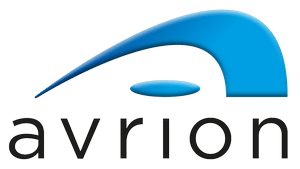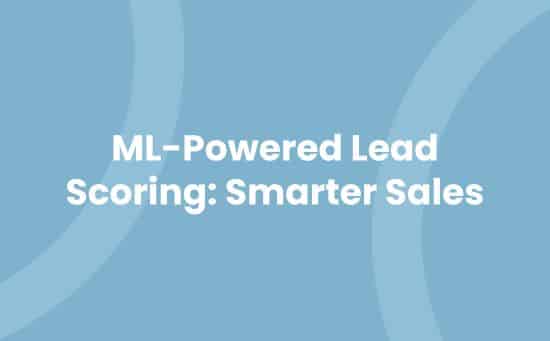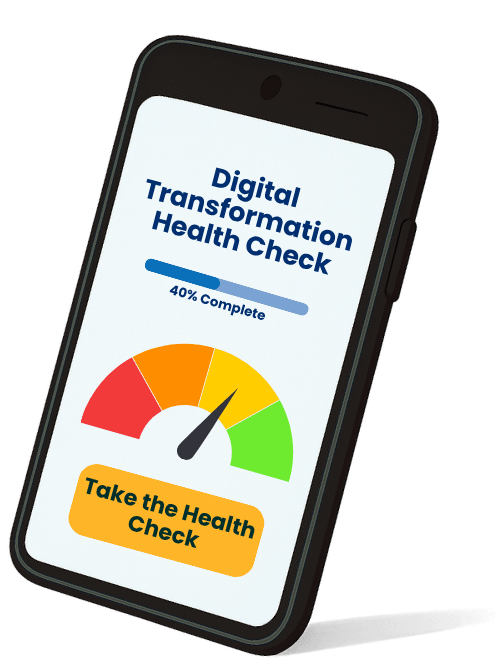Key Takeaways
- Machine learning lead scoring models leverage AI algorithms to analyse multiple data points, automating lead qualification and improving conversion rates by up to 85%
- Key components include demographic (30%), behavioural (40%), temporal (20%), and technographic (10%) data points, providing a comprehensive evaluation of prospect quality
- Both supervised learning (using labelled historical data) and unsupervised learning (discovering patterns in unlabelled data) models can be utilised for effective lead scoring
- Successful implementation requires proper data collection, thorough preparation, and regular model training with a 70-15-15 split for training, validation, and testing datasets
- Performance metrics like conversion rates, lead response time, and model accuracy scores are crucial for measuring ROI and system effectiveness
- Regular maintenance, data quality management, and periodic model retraining are essential for maintaining accurate predictions and adapting to market changes
Are you struggling to separate hot leads from time-wasters? Machine learning lead scoring models have revolutionised how businesses prioritise their sales prospects. Like a skilled detective sifting through clues these intelligent systems analyse countless data points to identify your most promising opportunities.
You’re probably tired of watching valuable leads slip through the cracks while your team wastes time on dead-end prospects. Traditional scoring methods rely on guesswork but AI-powered solutions transform your raw data into actionable insights. Our proven approach has helped businesses boost conversion rates by up to 85% and slash time spent on unqualified leads.
Ready to turn your CRM data into a strategic advantage? We’ll show you how cutting-edge machine learning models can supercharge your sales process and help you close more deals with less effort. Let’s explore how this game-changing technology can transform your lead generation strategy.
Understanding Machine Learning Lead Scoring
Machine learning lead scoring models transform raw data into actionable insights by identifying patterns in prospect behaviour. These models leverage sophisticated algorithms to analyse historical data and predict the likelihood of conversion with remarkable accuracy.
Key Components of Lead Scoring Models
Lead scoring models integrate four essential components to evaluate prospect quality. Demographic data points capture firmographic details like company size, industry sector and annual revenue. Behavioural tracking monitors digital interactions including website visits, email engagement and content downloads. Temporal signals measure engagement frequency and recency of interactions. Technographic indicators assess the prospect’s technology stack compatibility.
| Component Type | Data Points Tracked | Impact Weight |
|---|---|---|
| Demographic | Company size, revenue, location | 30% |
| Behavioural | Website visits, email opens, downloads | 40% |
| Temporal | Engagement frequency, recency | 20% |
| Technographic | Tech stack, platforms used | 10% |
Traditional vs Machine Learning Approaches
Traditional lead scoring relies on manual rule-based systems with predetermined point values. Marketing teams assign arbitrary scores to actions like downloading whitepapers (10 points) or attending webinars (15 points). This approach lacks the sophistication to identify complex patterns or adapt to changing buyer behaviours.
Machine learning models analyse thousands of data points simultaneously to uncover hidden correlations. These AI-powered systems continuously refine their algorithms based on actual conversion outcomes. The models automatically adjust scoring weights as new patterns emerge delivering:
- Real-time score adjustments based on prospect interactions
- Multi-dimensional analysis across hundreds of variables
- Predictive insights identifying high-value opportunities
- Automated lead prioritisation for sales teams
- Dynamic scoring thresholds that evolve with market changes
The machine learning approach eliminates subjective scoring biases while providing greater accuracy in lead qualification. Modern CRM platforms integrate these capabilities to streamline sales processes through intelligent automation.
Types of Machine Learning Models for Lead Scoring
Machine learning models analyse complex patterns in prospect data to generate accurate lead scores. These models fall into two primary categories: supervised and unsupervised learning, each serving distinct purposes in lead qualification.
Supervised Learning Models
Supervised learning models operate on labelled historical data to predict lead conversion probability. These models learn from past successes and failures to identify high-value prospects.
Key supervised learning algorithms include:
- Classification Models: These algorithms categorise leads into specific groups based on their likelihood to convert. Examples include:
- Random Forests: Analyse multiple decision trees simultaneously
- Gradient Boosting: Build sequential models to correct previous errors
- Neural Networks: Process complex patterns through interconnected layers
- Decision Trees: Create transparent decision paths based on prospect attributes such as:
- Company size
- Engagement level
- Budget range
- Timeline to purchase
- Logistic Regression: Calculates conversion probability using weighted features:
- Website visits
- Email interactions
- Content downloads
- Social media engagement
Unsupervised Learning Models
Unsupervised learning models discover hidden patterns in unlabelled data, grouping similar leads together based on shared characteristics.
Popular unsupervised techniques include:
- Clustering Algorithms: Segment leads into distinct groups:
- K-means clustering: Groups leads by behaviour patterns
- Hierarchical clustering: Creates nested lead segments
- DBSCAN: Identifies lead clusters of varying shapes
- Dimensionality Reduction: Simplifies complex lead data:
- Principal Component Analysis (PCA)
- t-SNE visualisation
- Feature selection methods
- Association Rules: Uncover relationships between lead attributes:
- Purchase patterns
- Content preferences
- Industry correlations
- Technology usage
Learn more about AI-powered lead scoring solutions
Essential Features for Lead Scoring
Machine learning lead scoring models incorporate multiple data points to evaluate potential customers effectively. These models analyse historical data alongside real-time interactions to generate accurate predictions about lead quality.
Demographic Data Points
Demographic data forms the foundation of lead scoring models by providing crucial insights about prospect characteristics:
- Company Information: Revenue size annual turnover business type number of employees
- Geographic Location: Country region postal code market territory
- Industry Vertical: Sector classification market segment competitive world
- Decision-Maker Details: Job title department seniority level purchasing authority
- Company Maturity: Years in business funding rounds growth trajectory
- Financial Indicators: Budget allocation purchasing power credit rating
Learn more about demographic data analysis in lead scoring
Behavioural Indicators
Behavioural indicators track prospect interactions across digital touchpoints enhancing prediction accuracy:
- Website Activity:
- Page views duration
- Resource downloads
- Form submissions
- Product page visits
- Email Engagement:
- Open rates
- Click-through rates
- Response times
- Subscription status
- Content Interaction:
- Whitepaper downloads
- Webinar attendance
- Blog post engagement
- Case study views
- Social Media Activity:
- Platform engagement
- Content shares
- Comment frequency
- Profile interactions
Discover how behavioural tracking improves lead qualification
The feature engineering process transforms these raw data points into actionable metrics creating engagement scores that directly correlate with conversion probability.
Implementing ML Lead Scoring Systems
Machine learning lead scoring systems transform raw data into actionable insights through a structured implementation process. These systems analyse patterns in prospect behaviour to generate accurate conversion predictions.
Data Collection and Preparation
Data collection for ML lead scoring models integrates information from multiple sources:
- CRM Systems: Extract customer interactions contact details lead statuses
- Marketing Automation: Capture email engagement rates campaign responses form submissions
- Website Analytics: Track page visits time spent scroll depth conversion paths
- Social Media: Monitor engagement levels shares mentions interactions
Data preparation involves these essential steps:
- Data Cleaning
- Remove duplicate entries
- Fill missing values
- Standardise formats
- Filter irrelevant information
- Feature Engineering
- Create engagement scores
- Calculate time-based metrics
- Develop interaction indices
- Generate compound variables
| Data Type | Examples | Source |
|---|---|---|
| Numeric | Lead ID Status Codes | CRM Systems |
| Categorical | Industry Type Source | Marketing Tools |
| Text | Contact Details Comments | Email Campaigns |
| Temporal | Last Activity Dates | Website Tracking |
Model Training and Validation
The training process focuses on building accurate predictive models:
- Dataset Splitting
- Training set: 70% of data
- Validation set: 15% of data
- Testing set: 15% of data
- Algorithm Selection
- Classification models
- Random forests
- Gradient boosting
- Neural networks
- Logistic regression
- Performance Metrics
- Accuracy scores
- Precision rates
- Recall values
- F1 scores
- ROC curves
| Metric | Target Range | Impact |
|---|---|---|
| Accuracy | 85-95% | Overall Performance |
| Precision | 80-90% | False Positive Rate |
| Recall | 75-85% | Lead Capture Rate |
Cross-validation techniques ensure model reliability across different data segments. Regular retraining schedules maintain model accuracy as new data becomes available.
Measuring Lead Scoring Success
Machine learning lead scoring success relies on quantifiable metrics that demonstrate the model’s effectiveness in identifying high-value prospects. These measurements validate the system’s performance through data-driven insights.
Key Performance Metrics
Key performance indicators track the precision of machine learning lead scoring models in predicting conversion outcomes. Several essential metrics provide insights into model effectiveness:
- Conversion Rate: Track the percentage of scored leads that convert into customers
- Lead Response Time: Monitor the average time between lead identification and sales team engagement
- Model Accuracy Score: Calculate the ratio of correctly predicted outcomes to total predictions
- Precision Rate: Measure the proportion of true positive predictions among all positive predictions
- Lead Velocity: Analyse the speed at which leads move through the sales pipeline
- Lead Quality Score: Compare predicted scores against actual conversion outcomes
Learn more about lead scoring metrics at Salesforce
ROI Assessment
ROI calculations determine the financial impact of implementing machine learning lead scoring systems. The assessment includes:
Cost Metrics:
| Category | Typical Range |
|---|---|
| Implementation Costs | £5,000 – £50,000 |
| Monthly Maintenance | £500 – £2,500 |
| Training Investment | £1,000 – £5,000 |
Value Metrics:
- Revenue Growth: Compare pre-implementation vs post-implementation sales figures
- Cost Reduction: Calculate savings from reduced manual lead qualification time
- Resource Optimisation: Measure improved sales team productivity rates
- Customer Acquisition Cost: Track reduction in cost per converted lead
Explore ROI calculation tools at HubSpot
Remember to track these metrics consistently over time to identify trends and areas for model refinement.
Common Challenges and Solutions
Machine learning lead scoring models face several operational challenges that impact their effectiveness. Understanding these challenges enables organisations to carry out targeted solutions for optimal performance.
Data Quality Issues
Data quality forms the foundation of accurate lead scoring predictions in machine learning models. Poor data quality manifests through inaccurate entries, inconsistent formats or missing information across multiple data sources such as CRM systems, marketing automation platforms website analytics.
Here’s how organisations address common data quality challenges:
- Data Cleaning Protocols: Carry out automated validation rules to detect anomalies standardise data formats across all entry points
- Database Maintenance: Schedule regular updates to remove duplicate entries ensure information accuracy
- Integration Standards: Create unified data collection frameworks that synchronise information from CRM systems marketing automation tools social media platforms
- Validation Processes: Apply strict data entry guidelines use automated tools to verify data accuracy before processing
Model Maintenance
ML lead scoring models require consistent maintenance to maintain their predictive accuracy adapt to changing market conditions. Regular model updates ensure the system continues to deliver reliable lead assessments.
Key maintenance practices include:
- Performance Monitoring: Track model accuracy metrics identify patterns in prediction errors
- Algorithm Updates: Adjust model parameters based on new data patterns market changes
- Retraining Schedules: Set periodic model retraining cycles to incorporate fresh data maintain prediction accuracy
- Version Control: Document all model modifications track performance changes across different versions
- Data Pipeline Management: Monitor data flow ensure consistent quality across all sources
- Feedback Integration: Incorporate sales team feedback about lead quality adjust scoring parameters accordingly
[Link to related content about data quality management]
Conclusion
Machine learning lead scoring models represent a transformative approach to identifying and nurturing valuable prospects. By leveraging advanced algorithms and vast datasets these systems offer unprecedented accuracy in lead qualification and prioritisation.
The shift from traditional scoring methods to AI-powered solutions isn’t just about technological advancement – it’s about achieving tangible business outcomes. You’ll find that implementing ML lead scoring can dramatically improve your conversion rates reduce operational costs and enhance your team’s efficiency.
While the implementation requires careful planning and ongoing maintenance the benefits far outweigh the initial investment. As businesses continue to generate more data ML lead scoring will become increasingly vital for staying competitive in today’s dynamic market world.
Frequently Asked Questions
What is ML lead scoring?
ML lead scoring is an AI-powered system that analyses multiple data points to predict which potential customers are most likely to convert. It uses machine learning algorithms to process demographic, behavioural, temporal and technographic data, automatically ranking leads based on their likelihood to become customers.
How does ML lead scoring differ from traditional methods?
Unlike traditional manual scoring systems, ML lead scoring analyses thousands of data points simultaneously and automatically adjusts scores in real-time. It can identify hidden patterns and correlations that humans might miss, and continuously learns from actual conversion outcomes to improve accuracy.
What types of data do ML lead scoring models use?
ML lead scoring models incorporate four main types of data: demographic information (age, location, job title), behavioural data (website visits, email interactions), temporal signals (time-based activities), and technographic indicators (technology usage patterns).
How accurate are ML lead scoring models?
ML lead scoring models typically achieve high accuracy rates when properly implemented and maintained. Their accuracy depends on data quality, model selection, and regular retraining. Models are validated through cross-validation techniques and performance metrics like precision rate and model accuracy score.
How long does it take to implement an ML lead scoring system?
Implementation timeframes vary depending on data availability and system complexity. Typically, it takes 2-3 months to set up a basic system, including data collection, preparation, model training, and initial validation. More complex implementations may take 4-6 months.
How often should ML lead scoring models be retrained?
ML models should be retrained regularly to maintain accuracy. The frequency depends on your business cycle and data volume, but generally, models should be retrained monthly or quarterly. Some systems can be configured for continuous learning with automatic updates.
What are the main challenges in implementing ML lead scoring?
The primary challenges include ensuring data quality, integrating multiple data sources, maintaining model accuracy over time, and managing technical complexity. Companies also need to address data privacy concerns and ensure proper staff training for system usage.
How do you measure the success of ML lead scoring?
Success is measured through various metrics including conversion rate improvements, reduced lead response time, increased lead velocity, and overall ROI. Key indicators also include the model’s accuracy score, precision rate, and reduction in customer acquisition costs.



